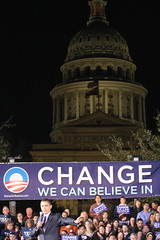College Admissions
College Admissions
Preparing for College
The Best College for You
What to Study
Applications
Education Options
Education Options
Private Universities
Public & State Universities
Community Colleges
Scholarships
Scholarships
African American Scholarships
Latino Scholarships
Native American Scholarships
Women Scholarships
College Grants
College Grants
Federal Grants
Merit Based Grants
Need Based Grants
Student Loans
Student Loans
Federal Student Loans
State Student Loans
No Co-signer Student Loans
Bad Credit Loans
Student Loan Consolidation
College Survival
College Survival
Financial Aid Tips
The Digital Student Blog
This past week, the results of a survey from Kaplan Inc. revealed that colleges have begun looking at potential applicants’ social-networking profiles such as Facebook and MySpace during the admissions process. According to Kaplan, 10% of admissions officers are now including a student’s social-networking site profile when making this important decision.
Perhaps even more important to students are two other figures, 38% and 25%, respectively. These are the percentages of profile pages that admission officials indicated ‘negatively affected’ their views of the applicant (38%) as compared to those that ‘positively affected’ their opinions (the 25%).
Profile and Privacy Settings
Given this development, students should give careful consideration as to the information and the photo(s) placed on their profile page. As for interests, it may seem humorous to list ‘wine, women, and song’ while that profile picture of you holding two cans of beer, even if done in jest, may seem harmless. However, face it, such information is not likely to set well with a college admissions officer or a potential employer.
As for your site, there is little doubt today that you should utilize the available privacy settings to ensure that only those you invite have access to the information on your page. This step is as important for your personal safety against online predators of various forms as it is to protect your basic image.
 But in regards to privacy options, students need to realize that group permissions for certain subgroups can expose you to other viewers. Accepting a group en mass might seem relatively innocuous (your elementary school classmates, for example) but such blanket permissions can inadvertently expose students to other site viewers that you might, in retrospect, wish did not have access to that information.
But in regards to privacy options, students need to realize that group permissions for certain subgroups can expose you to other viewers. Accepting a group en mass might seem relatively innocuous (your elementary school classmates, for example) but such blanket permissions can inadvertently expose students to other site viewers that you might, in retrospect, wish did not have access to that information.
Your Personal Brand
While students should use these privacy settings to limit outside access to personal information, it is important to realize that one of your most important steps in life today is the creation of your online image or brand. Today’s new media along with the capabilities of the Internet require students to think very carefully about the brand they want to cultivate.
And by brand, we mean the basic concept that is generally associated only with businesses. A brand in essence is “a collection of images and ideas” that goes on to “convey the essence of a company, product or service”. However, today it is being applied to you as an individual based on the image you create online.
In essence, every piece of personal information placed online is one step in creating your own personal collection of images and ideas (your brand). And since every piece of information on the Internet is archived or cached, any item you post has the potential to be accessed by others, including employers and college admission folks.
Most importantly, even if you decide to take it down later, it will remain available to the rest of the world on the Internet.
Two Simple Tests
 Therefore, it is imperative that students give very careful consideration to the brand they want to create. While it can sometimes be challenging to determine where the boundaries are in such matters, we have heard of two simple checks that will serve you well, the ‘Mom/Grand Mom’ check and the ‘Front-page’ check.
Therefore, it is imperative that students give very careful consideration to the brand they want to create. While it can sometimes be challenging to determine where the boundaries are in such matters, we have heard of two simple checks that will serve you well, the ‘Mom/Grand Mom’ check and the ‘Front-page’ check.
As silly as it may sound, when getting ready to post something online, ask yourself, what would your mother or grandmother think if they were to see the information? Is this something that would in any way serve to decrease their overall opinion of you? If the answer is yes, think twice about posting that information. Your future boss or that admissions counselor will have an even harsher view than your mother or grandmother.
The front page check likely sounds more sophisticated, it just asks you to consider a different audience. Ask yourself, what would happen if the information posted online were to make its way on to the front page of your local newspaper? Would it be a source of embarrassment or would it enhance your image in the community?
Though privacy settings give most users a certain level of comfort, the fact is that anything posted online will remain online for the indefinite future. Once there, it has the potential to be seen by others. So give very careful thought to everything you post.
To Cultivate Your Personal Brand
Because the material you place online can seriously impact your future opportunities you need to actively cultivate your personal brand. To ensure a positive presence online, give careful consideration to each of the following:
1. The Google Search Process – The first step to ensuring a positive brand is to imagine that someone is about to “Google” you. If they were to do so, what would the Google search engine turn up first?
 If it is your Facebook page, then examine that page carefully to ensure that what people see projects you in a positive light. Think of this page and your profile as being your online portfolio – include pictures of you working, performing, competing and volunteering as well as your resume. Include some written work that would help readers begin to understand who you are and what is important to you.
If it is your Facebook page, then examine that page carefully to ensure that what people see projects you in a positive light. Think of this page and your profile as being your online portfolio – include pictures of you working, performing, competing and volunteering as well as your resume. Include some written work that would help readers begin to understand who you are and what is important to you.
2. Creating your Own Web or Blog Page – Even better than a Facebook page, Kai Davis, a University of Oregon student and blogger, suggests you should create a separate web page or blog that features you at your best. With all the software options available on the Internet, setting up a page today is extremely easy.
Davis insists that the most important thing to remember “is to ‘own’ a search term in this digital age. Having a blog or a web page with some unique content, essays, discussion, resume, etc., will help position you above other candidates for jobs or internships.”
3. Buying a Domain Name – If you are ready to consider such a page, then you should think about buying a domain name as well. Workforce experts insist that “you should own a domain name that matches (as close as possible) your name.” The process of purchasing your name or one very similar is quite easy and relatively inexpensive. More importantly, it will provide you with your ‘own’ search term exactly as Davis describes.
Your Brand Matters
The bottom line is that the material you post has the potential to seriously impact your future opportunities. It might be during the college application/scholarship process or it could be much later when you turn to the world of work (or it could even come that fateful day you take the plunge and decide to run for political office).
Remember, your online brand does matter – be sure to treat it with the utmost care.
Flickr photos courtesy of Vicky Tgaw, SitMonkeySupreme, Jofus/JoeTheDough and AJC1.
With the convenience that e-mail offers, there may well be times when you want to send a note to your professor. However, your professor is not in your peer group nor is she in debt to your interests.
Three Don’ts
First, remember there is a formal relationship between you as the student and your professor. In jotting a note, address him or her with respect and use their proper title. Also use full words. Those cute little acronyms simply have no place in an interaction between student and professor. And those adolescent nicknames that form the basis of much of your high school correspondence do not gain you any credibility with your professors.
A definite no:
TO: Professor Barowski
FR: deltagammagirl@aol.com
RE: 2Day
 Hey Dr. B,
Hey Dr. B,
I can’t remember like 3 of the 5 main points from today’s class. I was running late and forgot my notebook and had to take most of the notes on my ITouch. My BFF’s kept like texting me and stuff so I missed most of the lecture.
TTYL,
Lexi
Don’t ever email a professor asking for notes or handouts – if you are going to miss a class ask a classmate to pick up any relevant materials. And never email your professor to ask about, complain about, or even mention a specific grade on a test or paper.
Another no-no:
TO: Professor Barowski
FR: flipcuppin@msn.com
RE: Need the Notes
Doc,
I’m not going to be in class today. No worries, not sick just need a day off…you know what I’m talkin’ ‘bout ;). But i REALLY NEED the notes before Mondays test, i can’t get lower than 75% or you’ll be seeing me again next semecter.
Peace out,
Kyle
And, do not sign with first name or nickname, use your full name and note the specific class you are taking by adding the title and section after your name (Biology 101, Sect. 2). Watching your tone also means waiting for a response. Don’t expect your professor to respond immediately as he or she may not even have access to the necessary materials to respond. Twenty-four hours is to be expected and forty-eight hours is actually a reasonable turnaround time.
Don’t even consider:
TO: Professor Barowski
FR: futurepresident@comcast.net
RE: Haven’t Heard From You
Richard,
I thought the approach to the lecture yesterday was a bit off. I e-mailed you my thoughts right after class but I guess you must have been “busy” since I haven’t heard from you yet. Meet me 10 minutes before class so I can tell you my views.
Derek
Two Dos
 Before hitting the send button, read your email from beginning to end to look for missed words as well as spelling and grammatical mistakes. When you are satisfied that the note is error free, read your email once again from beginning to end for the tone it conveys – ask yourself if your email denotes an appropriate level of respect.
Before hitting the send button, read your email from beginning to end to look for missed words as well as spelling and grammatical mistakes. When you are satisfied that the note is error free, read your email once again from beginning to end for the tone it conveys – ask yourself if your email denotes an appropriate level of respect.
As part of that deference, remember to always thank your professor when you receive a response. The basic standard is simple, the less powerful person always must write back.
Second, in today’s internet era, email may well be the primary way your professor forms an opinion about you as a person and as a student. Those professors will be the ones that you will one day ask for a recommendation, whether it be for a scholarship, graduate school, or the world of work. Every interaction with them, including the world of email, contributes to the overall impression they have of you. So read that email a third time to be sure it conveys the impression you want to send.
Flickr photo courtesy of factoryjoe and tmbg47.
Often times, during the college application process, the average high school senior gives very little consideration to his or her state university.
For many students, the state school may seem too close to home. For others, it could be that the school is simply too large.
 But most often, for those who have worked so hard to put themselves in the position of being able to go to college, the local university simply does not carry enough prestige.
But most often, for those who have worked so hard to put themselves in the position of being able to go to college, the local university simply does not carry enough prestige.
While this viewpoint is understandable, students should begin the college selection process with a careful look at what their state university has to offer. There are many features to review when considering a school, but there are five great reasons why that review should begin with an in-depth look at your local university.
Higher Admission Rates
If you have put together a solid four years of high school then your chances of being accepted at your local state university are very good. Getting in may seem like a forgone conclusion, but those applying to the elite schools like Harvard, Yale, and Princeton, face some of the lowest acceptance rates going (less than 10% at last check).
However, even schools like Boston College, UCLA and Davidson routinely reject roughly three out of every four applicants. Admission rates trend much higher at state colleges, with in-state candidates generally receiving priority status.
Affordability
State universities represent some of the best educational bargains available. Private college costs today average $33,000 per school year but it is not uncommon to see costs topping $40,000 annually and a few have reached the $50,000 a year plateau.
In contrast, the University of Florida costs in-state students less than $12,000 a year. The University of North Carolina at Chapel Hill, the school heading the Kiplinger top 100 best buys, has a sticker price of a shade under $14,000. With average after-aid costs totaling less than $5,000 per year, students at UNC can attend four years and still put some hard earned dollars aside for the possibility of graduate school.
Diverse Curricula and Program Options
Most experts will tell you, everything academically available at an elite college can be found at many state universities. In fact, the vast majority of state universities offer very strong degree programs and can claim a lengthy history of successful and high-powered graduates.
With almost unlimited major and career options, students attending a state university can still major in business yet minor in a foreign language, study engineering while minoring in communications, even obtain a general liberal arts degree if they see fit. The options are truly endless.
And with that wealth of options available, there is less pressure to have a major set when you begin your studies. At a state university, you can actually change your major and move to a different program within the school, often doing so while still keeping your credits. Transferring out to another school to change majors can be very costly in terms of dollars and time.
Diverse Campus Activities
 The size of the state university means that a wealth of extracurricular options will be available. While most schools will offer some level of sports as well as leadership opportunities, the number of special-interest clubs, newspapers, theater and music options are far greater at state universities. At the University of Georgia alone there are more than 500 student clubs and organizations.
The size of the state university means that a wealth of extracurricular options will be available. While most schools will offer some level of sports as well as leadership opportunities, the number of special-interest clubs, newspapers, theater and music options are far greater at state universities. At the University of Georgia alone there are more than 500 student clubs and organizations.
In addition, the state university will by its nature see a very diverse student body, including socio-economic and academic diversity. Though they do hand-pick students, the elite schools try desperately to find ways to ensure some level of diversity on their campuses. At a state college, the less rigorous entrance criteria ensures that social diversity happens naturally.
Proximity to Home
Part of the college experience is the opportunity to get away from home and spread one’s wings. However, there will actually come a time when some of mom’s home cooking will seem like dining out and that old bed in your room will offer a familiar comfort you never knew existed.
Being at your local state school means you have the chance to get home at least for all the major holidays, and if is not too far from home, even for a weekend from time-to-time. In addition, the sheer number of students from across the state guarantee a chance to hitch a ride to within a few miles from home.
Editors note: The list of the best school buys at Kiplinger.com features primarily state universities.
Flickr photo courtesy of bnp.
It is easy to see why so many young people were willing to work for and to cast ballots on behalf of the man about to become our 44th president.
There is soon to be a very different direction for the country as president-elect Barack Obama has already begun the process of conveying a new message to the American public.  Bogged down in two wars and with an economy in peril, the man who began his career by serving the poor in Chicago has already begun establishing a call to service from the people of the richest country on earth.
Bogged down in two wars and with an economy in peril, the man who began his career by serving the poor in Chicago has already begun establishing a call to service from the people of the richest country on earth.
And many of his options will focus on a direct call to the youth of America.
Victory Speech Lays a Foundation
Obama formally set forth the call to service in his victory speech:
“Above all, I will ask you to join in the work of remaking this nation the only way it’s been done in America for 221 years – block by block, brick by brick, calloused hand by calloused hand.”
“What began 21 months ago in the depths of winter cannot end on this autumn night. This victory alone is not the change we seek – it is only the chance for us to make that change. And that cannot happen if we go back to the way things were.”
“It cannot happen without you, without a new spirit of service, a new spirit of sacrifice. So let us summon a new spirit of patriotism; of service and responsibility where each of us resolves to pitch in and work harder and look after not only ourselves, but each other.”
No Shopping or Disney World Messages Likely
The Obama message contrasted sharply with that of the current administration.  One of the more striking moments in the Bush presidency occurred just two weeks after 9/11 when the Republican urged Americans to go “down to Disney World in Florida.”
One of the more striking moments in the Bush presidency occurred just two weeks after 9/11 when the Republican urged Americans to go “down to Disney World in Florida.”
And if that were not bizarre enough, in his address to the country in 2006, as our economy was struggling, our president noted “a strong beginning to the holiday shopping season across the country.”
He followed that up with his recipe for offsetting further potential economic doldrums.
“And I encourage you all to go shopping more.”
A Constant Message
Contrary to the words of our current president, the man set to take office in January actually had already begun setting a different tone back in September. At that time, Obama laid out some of his ideas regarding how young people will be able to offer their services.
“This moment is too important for America’s greatest resource–our people–to sit on the sidelines. So as President, I will ask for the active citizenship of Americans of all ages and walks of life.
First, we need to create opportunities to serve. I’ll ask more young people to serve in uniform and expand the size of our military. And I’ll increase AmeriCorps–our network of local, state and national service programs–from 75,000 slots to 250,000.”
College Funds for Service
Obama insists he will seek to have such service performed in those areas of greatest need: a greater number of talented Americans willing to teach; others to work on the development of renewable and efficient energy; and another group still to grow the nation’s Foreign Service and Peace Corps.
 In return, the president-elect has put forth some very noteworthy ideas to provide a meaningful return for that service. For all college students, the prospect of financial support for school looms large.
In return, the president-elect has put forth some very noteworthy ideas to provide a meaningful return for that service. For all college students, the prospect of financial support for school looms large.
“We need to integrate service into education. We should help schools develop service programs outside the classroom. And I’ve proposed an annual college-tuition tax credit of $4,000 in exchange for 100 hours of public service.
“You invest in America, and America invests in you–that’s how we’ll make college affordable for every American.”
It’s a new message for sure, one that is all about a spirit of community.
It is also one that will invoke comparisons to John F. Kennedy’s inauguration call, “Ask not what your country can do for you, ask what you can do for your country.”
Flickr photos courtesy of Mr. Wright, PingNews.com, and jmtimages.
 The layout of our freeform college radio station is such that we’re stuck broadcasting out of the basement of a dorm. Essentially, our station was recently relocated after the school decided to construct a new student center (rendering the college, until construction finishes, with no central student gathering spot). Anyway, it’s obvious that the studio was once storage space or, at the very least, a custodial washroom. There’s a vent above our soundboard and every now and then, especially late nights and on weekends, station disc us disc jockeys can get a mild contact high from the marijuana that seeps into the small sound booth.
The layout of our freeform college radio station is such that we’re stuck broadcasting out of the basement of a dorm. Essentially, our station was recently relocated after the school decided to construct a new student center (rendering the college, until construction finishes, with no central student gathering spot). Anyway, it’s obvious that the studio was once storage space or, at the very least, a custodial washroom. There’s a vent above our soundboard and every now and then, especially late nights and on weekends, station disc us disc jockeys can get a mild contact high from the marijuana that seeps into the small sound booth.
I was never into drugs in college and I don’t think it’s because I was a straight edge goodie-goodie. Maybe that’s funny because I just admitted to being part of the largest group of stereotypical stoners we’ve got in a college radio station. I don’t know if that sets me apart from the majority of students that seem to, at the very least, experiment. In fact, most of my friends have. I don’t think they do it regularly though. There’s just some sort of appeal that comes along with the idea of being able to get high thinking that nobody’s going to care.
The act of the matter is that aside from drug it being illegal and users always running the risk of meeting the brick wall of school discipline, it’s expensive (and I’ve made similar arguments about those kids that blow $7 per beer at the overpriced local college bars). Right now, there’s a story breaking out of San Diego State University where at least 96 students were picked up on drugs and weapons charges following one student’s overdose.
I’m not going to lie. Drugs are just as big a part of college today as they’ve ever been – and their use is on the rise. Essentially, you’ve got 18 year olds running around away from home for the first time with zero responsibility thinking they can get away with anything (and obviously those D.A.R.E. programs did no good in grade school). Then, suddenly, a one student turns up dead and a raid results in the arrests and likely educational destruction of dozens and dozens of kids that thought this could never happen to them.
Perhaps the story is used to set an example, act as a deterrent, show that cops are doing something to combat drugs, etc. Nonetheless, regardless of where you fall politically on the legal status of drugs, it’s true that the San Diego incident speaks volumes about needing to quickly adjust toward a sense of maturity alongside the responsibility that should accompany the seemingly sudden transition toward college and, more importantly, an overall sign of getting older. This is what for too often many new students in particular think they can get away with. What they don’t realize is how quickly one silly mistake can end up tarnishing an entire college experience and perhaps stay with them long after college is over.
 Congratulations, class of 2012! You’re probably pumped that you got into your school of choice and now you’re planning on making the next step. While your dorm room supplies should be purchased soon (we’ll talk about a good list of items to buy in an upcoming article), you definitely need to worry about bringing a computer to school. The question is: what kind should I bring? Are laptops better than desktops? What is the most suitable solution for me?
Congratulations, class of 2012! You’re probably pumped that you got into your school of choice and now you’re planning on making the next step. While your dorm room supplies should be purchased soon (we’ll talk about a good list of items to buy in an upcoming article), you definitely need to worry about bringing a computer to school. The question is: what kind should I bring? Are laptops better than desktops? What is the most suitable solution for me?
The answer of this question is determined by how often you intend to use it. Many classes require you to be mobile and utilize a laptop for this purpose. Additionally, if you have a roommate on a different schedule, you may want to have a laptop so that you can work elsewhere without disturbing him or her.
Laptops are great for taking notes, churning out papers in the library (on your own personal property), and since all are equipped with wifi nowadays, you can get yourself wireless internet access anywhere. On the other hand, laptops are more expensive than desktops, but that’s because they’re more portable and a lot easier to take with you (especially at the end of a semester).
If cost is an issue and roommates are not a problem, a desktop may be a viable solution. Most desktops are more powerful than laptops (since portable chips and storage are harder to produce). But on the other hand, you’ll be hand writing your notes instead of typing them, and it may be a lot easier (and faster) to have control over your keyboard rather than have to jot things down by hand. It’s less strenuous on your hands, too.
While mobility is the laptop’s biggest strength, it’s also the biggest weakness. Since you can carry it around anywhere, it’s more likely to be broken. With that in mind, opt in for a service contract that gives you full warranty support when breakage occurs. Also, since your laptop can be stolen easily, consider ways to keep it secure. Laptop manufacturer Targus has a wide variety of security accessories available. Don’t forget to have an extra battery on hand, especially if you’re mobile (without a power outlet) for a prolonged period of time. Battery life dies down over time, so this is a purchase you may want to revisit in a few years as well. (Be sure to check out discount outlets like eBay for cheaper deals than going directly to the manufacturer for spare parts. I saved over $100 on a laptop battery I’m using right now by using eBay instead of Dell.)
As always, visit your college computing website and get their suggested hardware and software recommendations. You may even be eligible for some seriously good educational discounts when buying through your school. If you have any questions, you should contact your school’s computing program for advice.
 Something lots of students don’t really think about when they’re off at college is what to do in the event they wind up in a medical emergency. When it happens, and it’s happened to me, is to just do wind up in whichever emergency room the ambulance drives your broken body to. Chances are, as it was in my case, that you’ll find yourself at closest one. Well, not all hospitals are equal.
Something lots of students don’t really think about when they’re off at college is what to do in the event they wind up in a medical emergency. When it happens, and it’s happened to me, is to just do wind up in whichever emergency room the ambulance drives your broken body to. Chances are, as it was in my case, that you’ll find yourself at closest one. Well, not all hospitals are equal.
I wound up at a really horrible hospital that so happens to be footsteps from where an incident took place that left me with a few broken bones that still bother me now, years later. Had I wound up in a hospital that specializes in my injury, I likely would have received a much better treatment.
USNews and World Report, the same people that put together that top college list every year, also rank hospitals. It’s really worth studying this and putting together a list of the best facilities for various needs. It’s also worth having a primary care practitioner at your college, especially if “home” is far away. It can help with insurance companies that require referrals for even the most routine procedures.
Another issue you’ll likely be confronted with, especially as a first year student, is whether to pick up an insurance plan or, if available, retain coverage under your parents (likely a possibility if you’re under 25). The decision to spend a few more hundred dollars up front could save you thousands down the road. At my school and many others (since the company that handles health insurance for mine takes covers many universities), students are presented with a primary and comprehensive plan.
The primary is, simply put, the bare minimum. In the event of something happening, the coverage is there. It’s not the best and it requires more to spend out of pocket, but it’s something. Then there’s the comprehensive coverage that, for the most part, covers everything. Is it a game? Sure. But so is health insurance. And, knowing firsthand, having the best coverage can be a real lifesaver.
 You may not have found a job or you got lucky and graduated with a career, but business school is always a possibility in your future. BusinessWeek rates the top 50 business schools for undergrads, and to make things easier, we’ve done it here at GoCollege too.
You may not have found a job or you got lucky and graduated with a career, but business school is always a possibility in your future. BusinessWeek rates the top 50 business schools for undergrads, and to make things easier, we’ve done it here at GoCollege too.
50. Rutgers University (New Brunswick, NJ), $10,949/year, 780 students. Accounting and finance is best (marketing and management, not so much)
49. University of Miami (Coral Gables, FL), $34,720/year, 2,089 students. Small classes but not great recruitment.
48. University of Minnesota-Carlson (Minneapolis), $10,498/year, 1,863 students. Limited program offerings and easy classes, but good recruitment within the Twin Cities area.
47. University of San Diego (San Diego, CA), $32,564/year, 1,077 students. Great personable professors, but the jobs are not so great.
46. University of Florida-Warrington (Gainesville, FL), $3,372/year, 2,177 students. Big classes that are mostly taught by TAs are disappointing.
45. Loyola College-Sellinger (Baltimore, MD), $42,730/year, 926 students. Small classes and one-on-one attention gets high marks.
44. University of Georgia-Terry (Athens, GA), $5,622/year, 2,388 students. Academically rigorous courses, and it’s hard to get into top level classes.
43. University of Maryland-Smith (College Park, MD), $7,968/year, 2,877 students. Wall Street hasn’t seen many student representation.
42. Boston University (Boston, MA), $34,930/year, 1,979 students. Good curriculum but tough grading system and not-so-good recruiting disappoint.
41. Case Western Reserve University-Weatherhead (Cleveland, OH), $33,538/year, 405 students. Small classes are great, but there’s a lot of work.
40. Binghamton University (Binghamton, NY), $6,012/year, 870 students. Close-knit administration is a bonus.
39. Michigan State University-Broad (East Lansing, MI), $10,090/year, 2,065 students. Good classes, not as good teachers/administration.
38. Pennsylvania State University-Smeal (University Park, PA), $14,343/year, 5,492 students. Good supply of recruiters, but the cost is high for some.
37. University of Wisconsin-Madison (Madison, WI), $7,460/year, 1,312 students. Too many classes are taught by TAs and not professors, but recruitment is high.
36. Baylor University-Hankamer (Waco, TX), $25,340/year, 2,565 students. Strong focus on ethics, but not strong in recruitment.
35. Santa Clara University (Santa Clara, CA), $33,000/year, 1,860 students. Great recruiting within the Silicon Valley area but not much elsewhere.
34. Northeastern University (Boston, MA), $31,899/year, 2,921 students. Co-op opportunities are aplenty.
33. University of Washington (Seattle, WA), $6,385/year, 1,750 students. Small community and close-knit professors, but hard to find jobs on the east coast.
32. Texas Christian University-Neeley (Fort Worth, TX), $24,865/year, 1,727 students. Solid leadership program coupled with tough marks and difficult recruiting makes finding jobs hard.
31. Texas A & M-Mays (College Station, TX), $7,266/year, 3,856 students. Honors classes perform better than other classes, which aren’t as challenging.
30. Bentley College (Waltham, MA), $32,896/year, 3,810 students. Small classes shine, and finance and accounting majors get the best jobs.
29. The College of William & Mary-Mason (Williamsburg, VA), $9,164/year, 453 students. Broad curriculum and intimate environment with great professors.
28. Babson College (Babson Park, MA), $34,112/year, 1,799 students. Students need to run a business for the entrepreneurship program. Work and grading is difficult.
27. Fordham University (New York), $32,720/year, 1,866 students. Strong focus on ethics and integrity but jobs aren’t easy to find.
26. Rensselaer Polytech Institute-Lally (Troy, NY), $35,885/year, 374 students. Big focus on technology and personal professors win points.
25. Lehigh University (Bethlehem, PA), $35,610/year, 1,434 students. Faculty is well-liked, but recruiting is more difficult (accounting majors do better than marketing)
24. Miami University-Farmer (Oxford, OH), $11,875/year, 2,025 students. Accounting and finance programs get the jobs, but advising program isn’t recommended.
23. Southern Methodist University-Cox (Dallas, TX), $33,170/year, 917 students. Professors are accessible and recruiting occurs within the Dallas area.
22. Carnegie Mellon University-Tepper (Pittsburgh, PA), $37,544/year, 450 students. Intense work but school is small and quantitative skill focus is a plus.
21. Wake Forest University-Calloway (Winston-Salem, NC), $34,330/year, 415 students. A great workload that helps prepare students but also hurts them in the job hunt.
20. University of Richmond-Robins (Richmond, VA), $38,850/year, 670 students. Classes are small and students have a good relationship with professors.
19. Georgetown University-McDonough (Washington DC), $35,740/year, 1,297 students. Good DC location gives political focus.
18. University of Illinois (Urbana-Champaign, IL), $12,232/year, 2,649 students. New building under construction with good staff and faculty.
17. University of Southern California-Marshall (Los Angeles, CA), $35,810/year, 3,497 students. Extensive alumni helps students find jobs.
16. Indiana University-Kelley (Bloomington, IN), $7,958/year, 4,069 students. Curriculum combines finance, marketing, strategy, and operations.
15. Washington University-Olin (St. Louis, MO), $35,524/year, 758 students. Good professors and administration, but recruiting falters.
14. Boston College-Carroll (Boston, MA), $35,674/year, 1,970 students. Lessons can be applied to real world and the career-services staff is accommodating.
13. Villanova University (Villanova, PA), $34,900/year, 1,804 students. Accounting program is top-notch, but marketing majors again feel out in the dark.
12. University of North Carolina-Kenan-Flagler (Chapel Hill, NC), $5,340/year, 658 students. Outstanding global focus and emphasis on technology makes the school shine.
11. University of California Berkeley-Haas (Berkeley, CA), $8,384/year, 700 students. Harsh grading with high-caliber faculty.
10. University of Texas-McCombs (Austin, TX), $8,908/year, 3,969 students. Good recruiting and accounting program.
9. Massachusetts Institute of Technology-Sloan (Cambridge, MA), $34,986/year, 246 students. Quantitative skills taught well and undergrads are challenged with MBA courses if desired.
8. New York University-Stern (New York, NY), $36,524/year, 2,335 students. Focuses on finance and is perfectly situated by Wall Street for great job opps.
7. Brigham Young University-Marriott (Provo, UT), $3,840/year, 1,616 students. Emphasis on ethical business leaders of the future.
6. University of Michigan-Ross (Ann Arbor, MI), $12,585/year, 1,069 students. Strict grading upsets students, but curriculum and teamwork win brownie points.
5. Emory University-Goizueta (Atlanta, GA), $34,336/year, 622 students. Hard-working professors and career service advisers.
4. Cornell University (Ithaca, NY), $19,291/year, 708 students. Challenging coursework prepares students well for business work.
3. University of Notre Dame-Mendoza (South Bend, IN), $35,187/year, 1,626 students. Powerful program with “die-hard alums.”
2. University of Virginia-McIntire (Carlottesville, VA), $8,690/year, 652 students. Excellent faculty and good starting salaries.
1. University of Pennsylvania-Wharton (Philadelphia, PA), $35,916/year, 2,519 students. Highly-esteemed students, faculty, and alumni.
Is business school in your future?
 The SFGate reports about a study conducted by Duke University that showed that 75% of college applicants cheated in some form on their way to college. Whether that meant copying homework or utilizing Wikipedia for their academic efforts, the concerns about ethics and college admissions is growing.
The SFGate reports about a study conducted by Duke University that showed that 75% of college applicants cheated in some form on their way to college. Whether that meant copying homework or utilizing Wikipedia for their academic efforts, the concerns about ethics and college admissions is growing.
The sad reality is that the students are winning while the teachers are losing. The article claims that when teachers find out that a student has cheated, the administration does not necessarily back them up. The word of the student is usually valued more heavily than the word of the teacher, and professional integrity becomes a problem within the community when the students’ lies are put first. In one case, a Stanford student continually asked her professors for a “regrade” after she changed the answers on a test. When her professor caught her red handed by photocopying the original exam, the university admonished the professor for violating an honor code — an honor code that the student herself did not even keep.
So what can be done? Some schools are working directly with the parents. Cheating becomes an issue that involves the parents from the first infraction. After that, the risk becomes greater: a F on the course.
Why do students cheat? The goal to become successful is by far one of the presiding reasons behind this apparent lack of ethics. As such, Stanford has a program called SOS (Stressed Out Students) that intervenes whenever stress is the culprit and reason behind cheating.
For now, the system is somewhat working. Stiff penalties make it more difficult for students to cheat. But that’s just scraping the surface. Many of my courses were laden with students who cheated on every single homework or test — and let’s be honest here, I haven’t been innocent, either.
In the end, remember that if you’re aiming for the highest score and eventually make it to the college of your choice while cheating your way through college, you may not succeed in the school of your dreams. Instead, you’ll find yourself to be miles behind your classmates. You’ll also find it important if not crucial to continue the trend of cheating. It’s just not worth it. You could spend that time learning for the course instead of stressing that your classmate has the answers. College is a knowledge-seeking venture, and bluffing your way through it isn’t the way to go.
More importantly, cheating is just a dishonest thing to do. And the only one you fool is yourself.
What other tips do you have to offer?